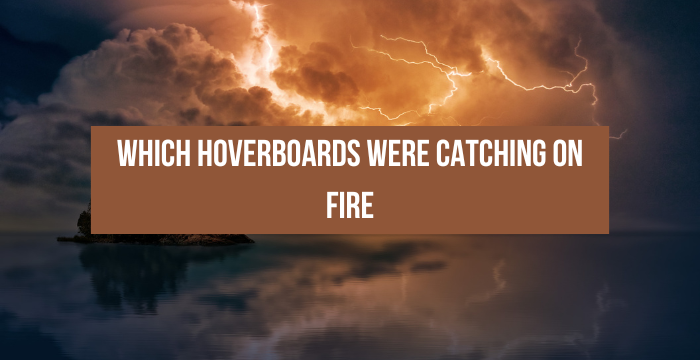
We’re in a futuristic world, and hoverboards have been the go-to mode of transportation for quite some time now.
But recently, there’s been an alarming spike in reports of hoverboards catching on fire.
It’s no wonder people are asking ‘which hoverboards were catching on fire?’ You’ve got a right to know what you should stay away from!
In this article, we’ll explore the models and brands that seem most prone to these fires, as well as safety tests and certifications you can look out for when buying a new board.
Plus, we’ll take a look at measures taken by manufacturers to prevent further incidents.
So buckle up it’s time to get informed about why so many hoverboards have been bursting into flames!
Contents
Which Hoverboards Were Catching On Fire?
The Models and Brands Prone to Fire
You may be wondering which models and brands are particularly prone to combusting, so let’s take a closer look.
It goes without saying that any hoverboard can potentially catch fire, but there have been certain models and brands that have raised particular alarm due to their manufacturing standards or product recalls.
In 2015, several well-known brands of hoverboards were recalled due to overheating batteries, including Swagway X1s and IO Hawks. These products had defective battery packs that were known to overheat and cause fires during charging or use.
It’s important to note that the recall didn’t affect all hoverboards on the market; many manufacturers stepped up their game in response by following more stringent safety tests.
However, some companies still cut corners when it comes to manufacturing standards and product recalls should not be taken lightly.
Even if you buy from a reputable manufacturer, it’s always wise to take proper precautions such as never leaving your device plugged in for extended periods of time and properly disposing of old batteries according to the instructions provided with the product.
Safety Tests and Certifications
With all the reports of hoverboards goin’ up in flames, it’s no surprise that safety tests and certifications became a priority. Manufacturers had to make sure their products were safe for consumers to use, so they began implementing rigorous testing procedures. This included power sources, battery design, and more.
To ensure a high level of safety standards were met for each product, manufacturers needed certifications from independent organizations. Some of the most notable certification organizations include Underwriters Laboratories (UL), Intertek Testing Services (ITS), and SGS Testing Services. These entities are responsible for ensuring that every hoverboard model meets specific safety requirements as well as UL 2272 certification guidelines.
Every hoverboard tested by these organizations must pass multiple tests such as electrical system evaluation, fire containment performance test, temperature test, and more before they can be sold to customers.
With this added layer of protection in place, users can feel confident knowing they’re getting quality products with enhanced safety features when they choose certified models.
Measures Taken to Prevent Further Incidents
Following the reports of exploding hoverboards, manufacturers took measures to ensure their products were safe for consumers by implementing stringent testing procedures and requiring certifications.
Battery safety is a priority for these companies, as well as informing customers about how to safely use the product.
Battery testing includes overcharging, short-circuiting, vibration, compression, and impact tests in order to evaluate its quality and effectiveness.
Companies have also implemented certification standards such as UL 2272, which require hoverboards to be tested and certified according to specific criteria outlined by the organization.
In addition, manufacturers are providing comprehensive safety guidelines with each purchase along with information on how to properly charge the hoverboard battery and maintain optimal performance.
Additionally, retailers are now providing more detailed information about the safety features of each product they sell.
With all these precautionary steps taken by manufacturers, customers can feel confident that they have a safe ride when using a hoverboard.
Conclusion
It’s clear that some hoverboards are more prone to fire than others. To make sure you’re purchasing a safe product, make sure it has gone through the necessary safety tests and certifications.
With these precautions in mind, you can be assured that your hoverboarding experience will be safe and enjoyable. So take the time to research your purchase before buying a hoverboard; it’ll help keep you and those around you out of harm’s way.
And don’t forget have fun!
